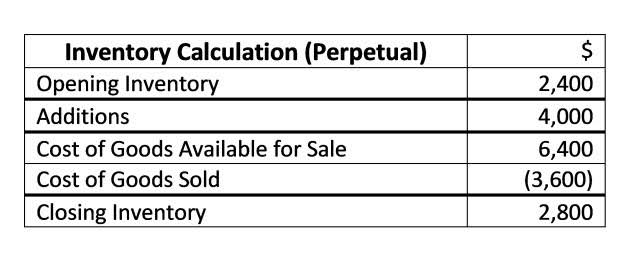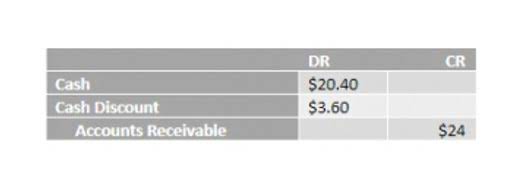
Following a few simple steps, you can forecast future revenues and expenses to ensure your business stays on track. Besides the percentage of sales method formula, one must know its benefits and limitations. Frank wants to see the percentage of sales for his expenses specifically so he goes back to his initial amounts and sees that expenses totaled $20,000, or 20% of revenue. For the sake of example, let’s imagine a hypothetical businessperson, Barbara Bunsen. She operates a specialty cake, army bed, cinnamon roll shop called “Bunsen’s Bundt, Bunk percentage of sales approach Bed, Bun Bunker” or “B6” for short.
What is the percent of sales method?

We’ll walk through an example with a positive net income, but we will also point out spots where problems could occur and lead to a negative net income.
Understanding the Percent of Sales Method: A Simple Guide for Learners
Percentage of sales is a budgeting method where a company determines its marketing budget as a percentage of its total sales revenue. This approach ties marketing expenditures directly to sales performance, helping businesses allocate resources based on their revenue generation. By using this method, organizations can create a more responsive budget that adjusts with their sales fluctuations, linking financial planning to actual market performance. This financial forecasting tool allows companies to evaluate their past sales accurately to project into the future easily. Based on the financial outlook, businesses can make necessary changes to increase profitability. This technique is popular among advertising companies owing to its straightforwardness and the ability to directly link advertising expenditures with revenue or sales.
- It’s also useful for risk management as it helps anticipate any financial challenges on the horizon, giving companies enough time to change course or correct any errors.
- If this percentage were 20% the previous year, Panther Tees’s management team would like to know why procuring the t-shirts costs more.
- These drawbacks show why other financial forecasting techniques are needed.
- This occurs for several reasons, but sound businesses need to anticipate some bad debt.
- With changing budgets and different needs every month, it’s important to know where your money is going and how it affects future earnings.
- While well-producing products receive the lion’s share of advertising, products that are new to the market, redesigned or can benefit from an increase in advertising often go underfunded.
- Those percentages are then applied to future sales estimates to project each line item’s future value.
What is the Percent of Sales Method?

First, Jim needs to work out the percentage that each of these line items represents relative to company revenue. It’s also useful for risk management as it helps anticipate any financial challenges on the horizon, giving companies enough time to change course or correct any errors. Bad debt expense represents the money that customers owe but are unlikely to pay. Estimating collection shortfalls is an important part of managing cash flow. Examine how these items change in response to sales variations.
“Percentage of Sales Method” also found in:

But you need to link these to implement the percentage of sales method. In this article, we’ll explain the percentage of sales method and how to calculate it. We’ll also show you a real-life example, highlighting its benefits and drawbacks.
The percentage of receivables method
This percentage is typically derived from historical data, making the process relatively simple and intuitive. For example, if a company historically spends 10% of its sales revenue on advertising, it can predict future advertising expenses by applying this percentage to its projected sales. (If you haven’t figured it out yet, this is one of the last steps you take when making your budget.) Multiply that number by the percentage of sales that become bad debts. Subtract that number from your projected end-of-year (or whatever accounting period you’re working in) total sales. In some ways, the percentage of receivables method is a type of percentage of sales. However, business owners can use it to calculate expenses, such as the costs of purchased goods and bad debts.

It is normal balance one of the fastest to prepare a company’s financial forecast. Moreover, the technique can offer high-quality estimates for items that closely correlate with sales. Businesses utilize the results of this technique to make necessary adjustments for the future depending on the financial outlook. That said, one must note that businesses cannot predict fixed using this tool.

The meaning and purpose of the percentage of sales method and aging of accounts receivable can be confusing for individuals new to the finance world. To avoid confusion, one must clearly understand the critical differences between the two concepts. Businesses can determine how much (approximately) they can earn or lose in all accounts by taking the revenue percentage relevant to every account and applying it to the forecast number. By no means is meant to be hailed as a definitive document of every aspect of your company’s financial future. Liz’s final step is to use the percentages she calculated in step 3 to look at the balance forecasts under an assumption of $66,000 in sales.
Step-by-step of the percentage-of-sales method
- The percentage of sales method is a valuable tool for financial forecasting.
- Suppose Panther Tees is a t-shirt retailer that sells t-shirts directly to consumers via its online platform.
- From sales funnel facts to sales email figures, here are the sales statistics that will help you grow leads and close deals.
- We’ll use her business as a reference point for applying the percent of sales method.
- This financial forecasting tool allows companies to evaluate their past sales accurately to project into the future easily.
When preparing a financial prediction using this method, businesses must prepare a plan and select the accounts the final projection must include. Sales may directly influence specific accounts on financial statements. Some accounts that businesses may want to forecast include the accounts payable, inventory, accounts receivable, and COGS or cost of goods sold. As helpful as the percentage of sales method can be for financial projections, it’s not an all-in-one forecasting solution.